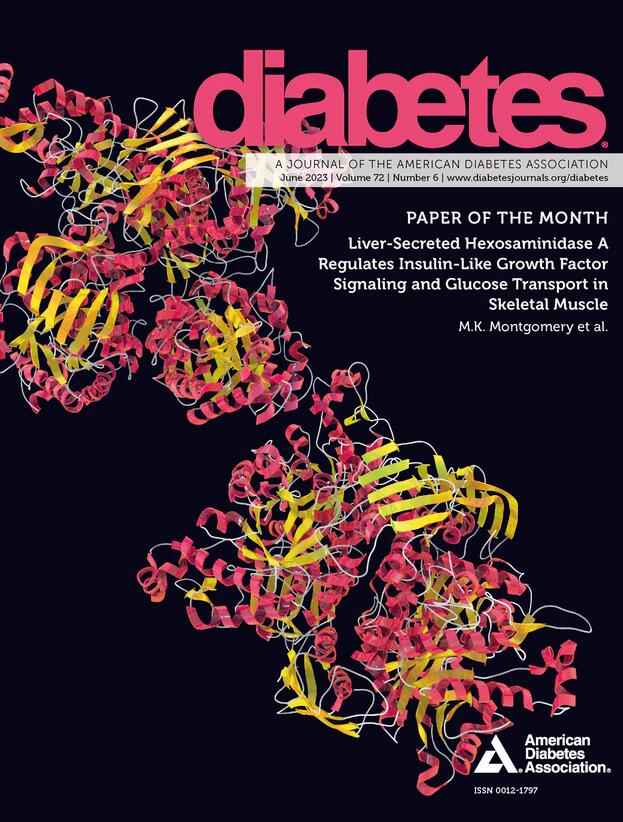Codelivery of NGFR100W and VEGFA mRNA Enhances Vascular and Neural Repair in Diabetic Peripheral Neuropathy
IF 6.2
1区 医学
Q1 ENDOCRINOLOGY & METABOLISM
引用次数: 0
Abstract
Diabetic peripheral neuropathy (DPN) poses significant clinical challenges due to progressive nerve degeneration and vascular insufficiency. To address both neural and vascular complications simultaneously, we employed an mRNA-based protein replacement therapy. In this study, leveraging mRNA template design, structure-based screening identified NGFR100W as a variant dissociating neuroprotective and nociceptive functions, demonstrating enhanced neuritogenic activity without pain sensitization. Additionally, transcriptome analysis of NGF mutants versus wild type further reveals the potential mechanism by which NGFR100W uncouples neuroprotective and nociceptive pathways. We cotransfected chemically modified NGFR100W mRNA and vascular endothelial growth factor A (VEGFA) mRNA, and the conditioned media collected from this transfection promoted endothelial cell migration, tubulogenesis, and neurite outgrowth. In a diabetic mouse model, combination therapy with lipid nanoparticle codelivery of NGFR100W and VEGFA mRNA significantly improved blood flow in the plantar region and mitigated nerve function decline compared with monotherapy. Histological analysis showed increased microvessel formation and higher intraepidermal nerve fiber density in treated mice. Our findings highlight the therapeutic potential of NGFR100W and VEGFA mRNA coadministration for DPN, suggesting that protein supplementation via mRNA could offer a novel strategy for clinical intervention in some chronic medical conditions. ARTICLE HIGHLIGHTS We aimed to develop a dual-targeted mRNA-based therapy to address both neural degeneration and vascular insufficiency in diabetic peripheral neuropathy. We identified NGFR100W as a mutation that enhances neuritogenic activity without pain sensitization and investigated its transcriptome to explore its ability to uncouple neuroprotective and nociceptive pathways. Combination therapy using lipid nanoparticles for codelivery of NGFR100W and VEGFA mRNA improved blood flow, increased microvessel formation, and preserved nerve function in a diabetic mouse model. This approach, which combines structure-based design and mRNA therapy, offers a novel strategy for decoupling protein functions and developing therapeutic molecules with specific functionalities.NGFR100W和VEGFA mRNA的共传递促进糖尿病周围神经病变血管和神经修复
糖尿病周围神经病变(DPN)由于进行性神经变性和血管功能不全,给临床带来了重大挑战。为了同时解决神经和血管并发症,我们采用了基于mrna的蛋白质替代疗法。在这项研究中,利用mRNA模板设计,基于结构的筛选鉴定出NGFR100W是一种分离神经保护和伤害功能的变体,在没有疼痛致敏的情况下显示出增强的神经生成活性。此外,NGF突变体与野生型的转录组分析进一步揭示了NGFR100W断开神经保护和伤害通路的潜在机制。我们将化学修饰的NGFR100W mRNA和血管内皮生长因子A (VEGFA) mRNA共转染,从转染中收集的条件培养基促进内皮细胞迁移、小管形成和神经突生长。在糖尿病小鼠模型中,与单一治疗相比,脂质纳米颗粒共递送NGFR100W和VEGFA mRNA的联合治疗可显著改善足底区血流量,减轻神经功能下降。组织学分析显示微血管形成增加,表皮内神经纤维密度增加。我们的研究结果强调了NGFR100W和VEGFA mRNA共同给药对DPN的治疗潜力,表明通过mRNA补充蛋白质可能为一些慢性疾病的临床干预提供一种新的策略。我们的目标是开发一种基于双靶向mrna的治疗方法来治疗糖尿病周围神经病变的神经变性和血管功能不全。我们发现NGFR100W是一个突变,可以增强神经生成活性,但不会引起疼痛致敏,并研究了其转录组,以探索其解耦神经保护和伤害通路的能力。在糖尿病小鼠模型中,使用脂质纳米颗粒共同递送NGFR100W和VEGFA mRNA的联合治疗改善了血流量,增加了微血管形成,并保留了神经功能。这种方法结合了基于结构的设计和mRNA治疗,为解耦蛋白质功能和开发具有特定功能的治疗分子提供了一种新的策略。
本文章由计算机程序翻译,如有差异,请以英文原文为准。
求助全文
约1分钟内获得全文
求助全文
来源期刊

Diabetes
医学-内分泌学与代谢
CiteScore
12.50
自引率
2.60%
发文量
1968
审稿时长
1 months
期刊介绍:
Diabetes is a scientific journal that publishes original research exploring the physiological and pathophysiological aspects of diabetes mellitus. We encourage submissions of manuscripts pertaining to laboratory, animal, or human research, covering a wide range of topics. Our primary focus is on investigative reports investigating various aspects such as the development and progression of diabetes, along with its associated complications. We also welcome studies delving into normal and pathological pancreatic islet function and intermediary metabolism, as well as exploring the mechanisms of drug and hormone action from a pharmacological perspective. Additionally, we encourage submissions that delve into the biochemical and molecular aspects of both normal and abnormal biological processes.
However, it is important to note that we do not publish studies relating to diabetes education or the application of accepted therapeutic and diagnostic approaches to patients with diabetes mellitus. Our aim is to provide a platform for research that contributes to advancing our understanding of the underlying mechanisms and processes of diabetes.
 求助内容:
求助内容: 应助结果提醒方式:
应助结果提醒方式:


